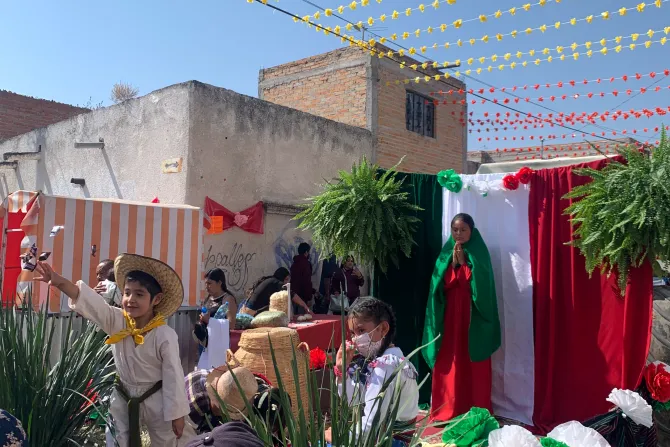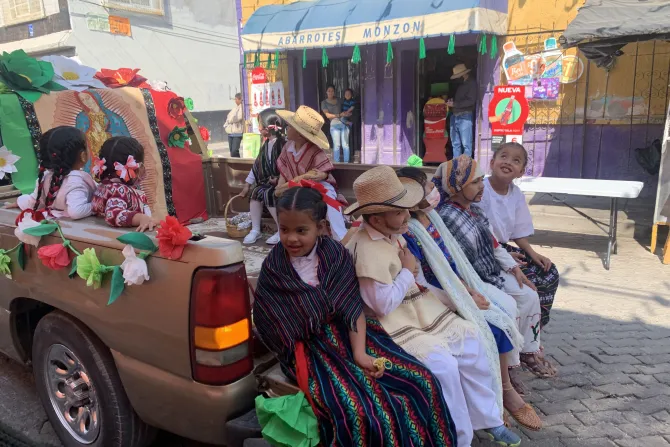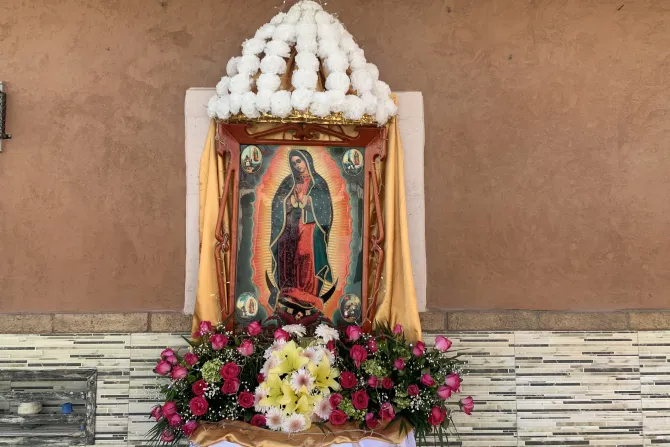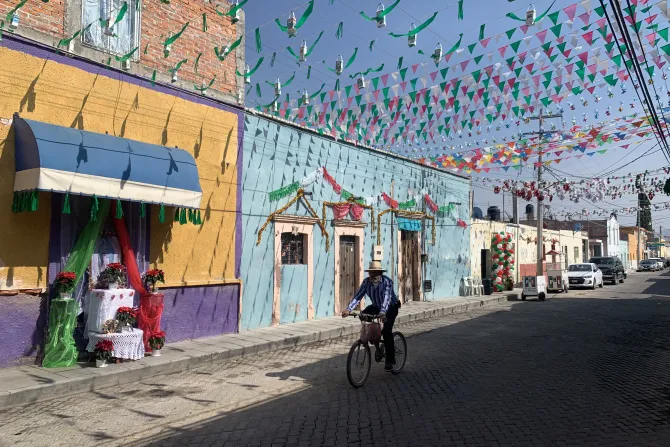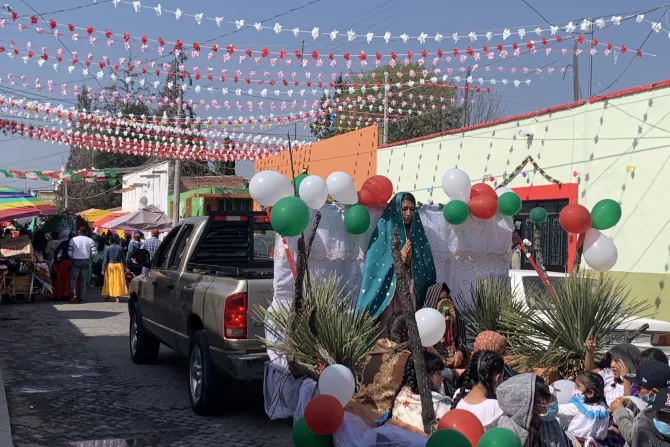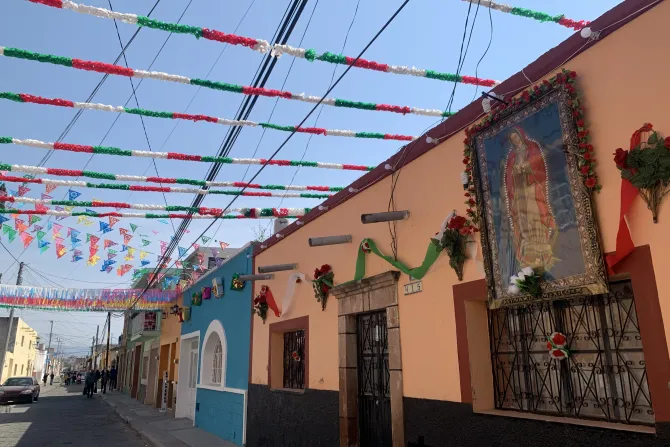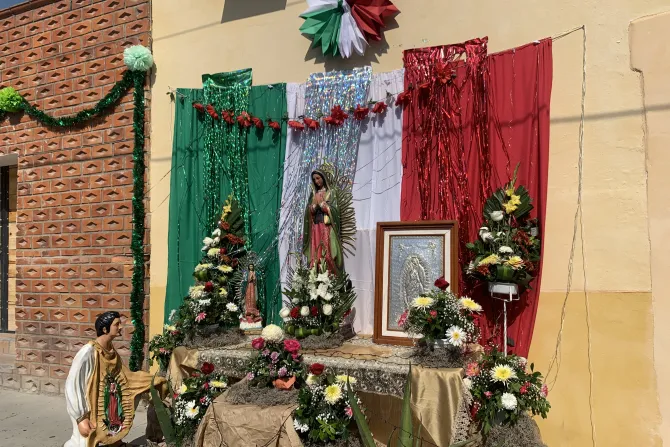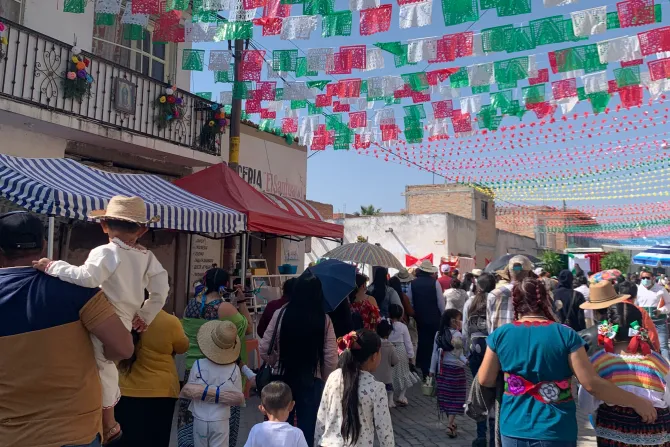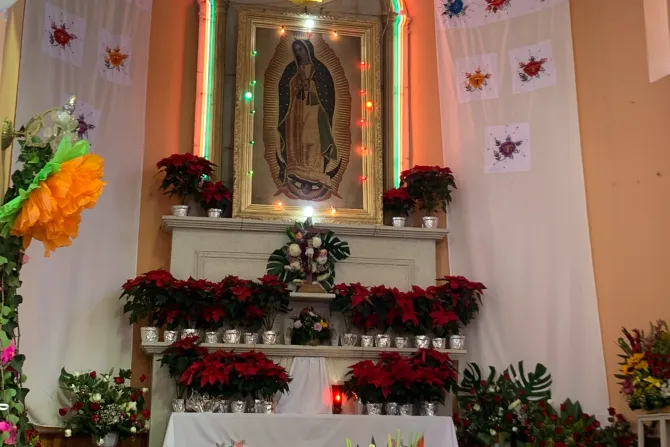Guanajuato, Mexico, Dec 12, 2021 / 15:05 pm
Celebrations began before dawn on Dec. 12 in a small town in the Mexican state of Guanajuato as church bells rang out, fireworks were lit, and people gathered to sing “las Mañanitas Guadalupanas” in honor of Our Lady of Guadalupe.
For the past 15 days, the town has held rosary processions through the streets each day at 6 a.m. in spiritual preparation for the Marian feast. The processions, known as “Rosario de la Aurora,” culminated in a daily Mass in a church dedicated to Our Lady of Guadalupe.
Throughout the weekend of Dec. 12, children dressed up as Saint Juan Diego and Our Lady of Guadalupe reenacted the 16th-century apparition in Tepeyac on the back of pick-up trucks in multiple parades through the banner-covered streets.
Musicians and people dressed in traditional embroidered clothes carrying baskets filled with enchiladas, fruit, and flowers followed behind in the procession singing “La Guadalupana.”
Masses were held every hour, but outdoor tents were still necessary to accommodate the overflow of people who could not fit in the Baroque Catholic Church.
The feast commemorates the apparition of the Blessed Virgin Mary to Juan Diego, an Aztec convert to Catholicism, in 1531.
Our Lady of Guadalupe made a request for a church to be built on the site where she appeared, Tepeyac, a hill northwest of what is now Mexico City.
As a sign for the bishop, she left an image of herself imprinted miraculously on his tilma, a poor quality cactus-cloth. The tilma should have deteriorated within 20 years, but shows no sign of decay after over 490 years. To this day it defies all scientific explanations of its origin.
The apparition and its miraculous Marian image led to mass conversions of native American communities to Catholicism.
The Basilica of Our Lady of Guadalupe in Mexico City is the most visited Marian shrine in the world. The annual number of visitors to the basilica is second only to Saint Peter’s Basilica in Vatican City.


